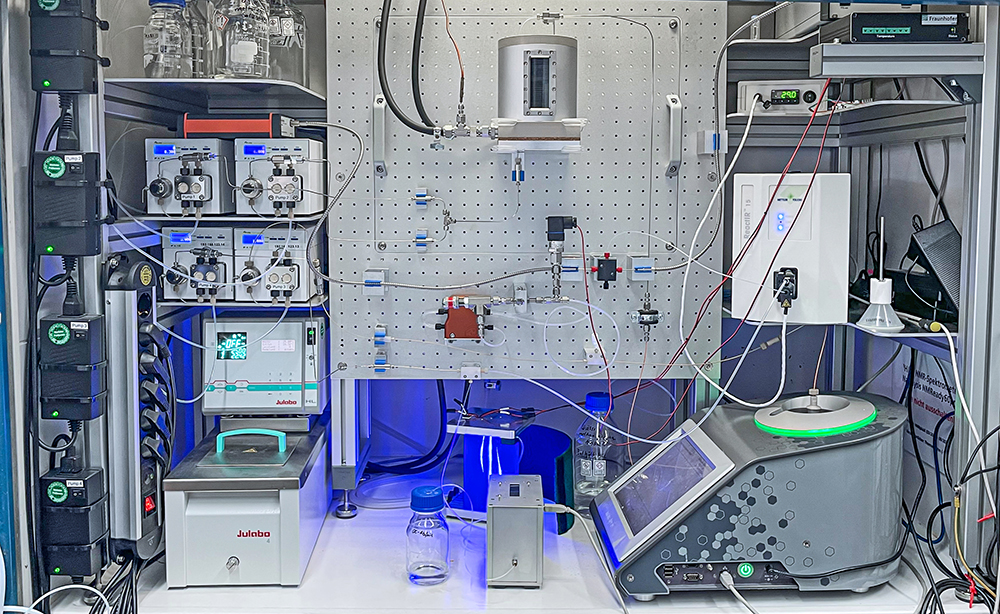Orthogonal spectroscopy for chemometrics and automated process optimization

Recent developments in process analytical technology have become a major driving force for the digitalization of the chemical industry with regard to Industry 4.0. Smart analytical tools based on commonly known analytical methods allow the rapid development of novel control technology for chemical processes. Even more important is the communication between the analytical tools and the meaningful interpretation of the accumulated data derived from highly resolving analysis tools. Such detailed information maps on every physical and chemical change during a chemical process are the base for an in-depth investigation using available software tools for big data analysis and machine learning.
Three tools see more than one
The general objective of the project NMRplusX is the combination of orthogonal spectroscopic methods for a comprehensive analysis of product solution streams from a continuous flow synthesis plant. NMR spectroscopy will be used in conjunction with FTIR and UV-Vis spectroscopy. Each methodology gives pivotal structural information on the chemical compounds in the product stream additional to conversion and selectivity rates. All available spectroscopic information can be used for chemometrics or vice-versa calibration and proves the synergy from three orthogonal spectroscopic tools. A central process control unit will harmonize safe data transfer between each of the spectrometers and all communication to the continuous flow synthesis plant.
Smart hardware meets smart software
Big data amounts derived from each spectroscopic tool are analyzed and assessed as base for machine learning approaches. Minimal or systematic changes in spectroscopic data can be disclosed and verified by three analytical methods, hence, associated with physical and chemical changes in the synthesis protocol. Results from routine learning with normalized spectroscopic data sets can then be transferred from the model compound synthesis to its derivatives allowing a faster and more reliable process development.
Within NMRplusX we join our expertise with Nanalysis Corporation for spectrometer hardware development, TROUT GmbH for smart software engineering and Prof. Jason Hein from University of British Columbia for elucidation of reaction mechanisms via spectroscopic analysis.
Our research & development services
We offer the development, construction and provision of a customized spectroscopic module for the online analysis of continuous flow chemical processes to our customers. We complement the implementation of various spectroscopic methods in one module with active control of a continuous flow synthesis plant via an integrated process control unit. Our research and development work will be applicable in a broad range of fine chemical syntheses.
Funded by: German Federal Ministry of Education and Research (BMBF), funding code 01DM19004A.
 Fraunhofer Institute for Microengineering and Microsystems IMM
Fraunhofer Institute for Microengineering and Microsystems IMM